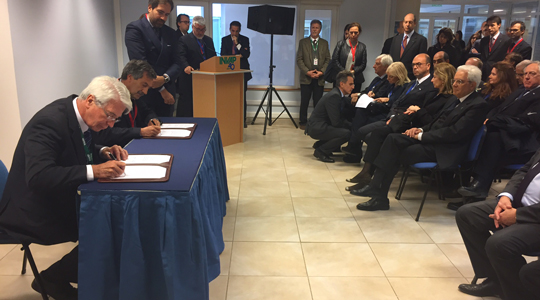
It's called ANDES and will be a large underground research infrastructure, like the INFN Gran Sasso National Laboratories, the largest underground laboratories in the world dedicated to astroparticle physics. The only difference with respect to this last is that instead of being under the massif of the Apennines it will be built in the Agua Negra tunnel in the Andes. This is the main project included in the agreement that was signed on May 10th, in San Carlos de Bariloche in Argentina, in the presence of the President of the Italian Republic, Sergio Mattarella, the President of INFN, Fernando Ferroni, and the President of CNEA (Comisión Nacional de Energica Atomica), Osvaldo Calzetta Larrieu. The new agreement, which specifically regards research in astroparticle physics, is part of the Memorandum of Understanding signed by the two scientific institutes in 2015 and concerns, in particular, three international projects: the ANDES Laboratory, the Pierre Auger Observatory and the QUBIC (Q-U Bolometric Interferometer for Cosmology) Observatory. Within the scope of ANDES, lNFN will provide an important contribution to
the construction of the new underground laboratory, thanks to the thirty years of experience acquired by the Gran Sasso National Laboratories. INFN will thus provide its knowledge and skills acquired in training people and in the design and construction of experimental prototypes. For the Pierre Auger Observatory project, INFN will be responsible for the surface scintillators, while for the QUBIC Observatory for its cryostat. INFN and CNEA will subsequently develop a more generally coordinated and joint action in the field of research in astroparticle physics: this action will cover everything related to the training of graduate students and technicians, basic and applied research, technology development and deployment of new equipment, techniques and methodologies.






